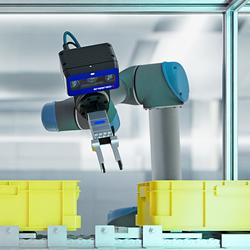Wipro, Excelfore Partner to Offer Secure Connectivity Solutions for Next-Gen Smart and Autonomous Vehicles
Blue Vigil Announces Inspire and Matrice Drone Integration
SMART Parking
How Remote Sensing Technology is shaping up the nature of human survival?
In Search of a Lost Veteran
RE2 Robotics to Supply Highly Dexterous Manipulation System Robot to UCLA Biomechatronics Laboratory
Most innovative Flight Zone in Europe, Startup Session and the presentation of the first Drone Pioneer Award address especially young entrepreneurs at IASEXPO
VisionHack - First International Hackathon on Computer Vision for Unmanned Vehicles
FAA Administrator Michael P. Huerta to Deliver Grand Opening Keynote Address at InterDrone
Lockheed Martin CDL Systems's UAV software to promote collaboration and information sharing amongst allies
Kaboom! Russian Drone With Thermite Grenade Blows Up a Billion Dollars of Ukranian Ammo
Drone Company Atlas Dynamics Completes $8 Million Funding Round
INTERPOL World 2017 strengthens resolve for international cooperation to address crime
Microdrones Successfully Completes 10 New BVLOS Test Flights Using Its Standard Solution
Osram Invests in LiDAR Expert LeddarTech Inc.
Records 4351 to 4365 of 7306
First | Previous | Next | Last
Featured Product

3D Vision: Ensenso B now also available as a mono version!
Robotics and Automation - Featured Company

